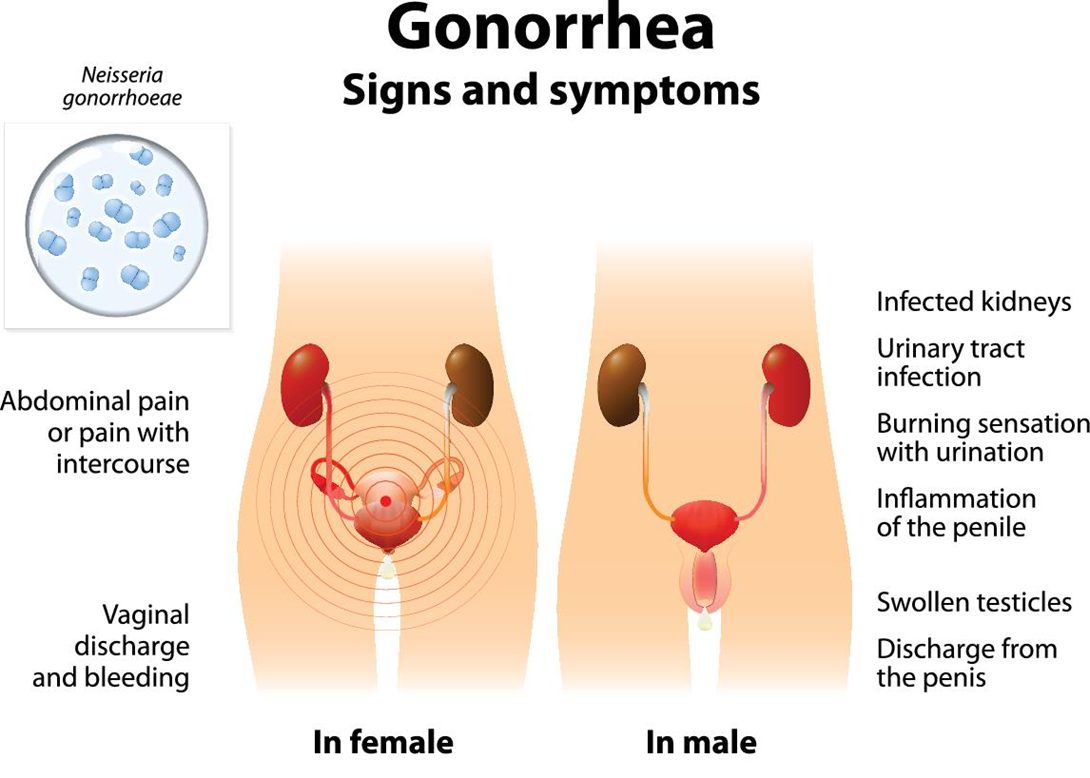What age group has the highest rates of STD infection?
15-24 years old
51-60 years old
25-35 years old
36-50 years old
The Correct Answer is A
Choice A reason: According to the CDC, nearly half (46%) of all new STDs occur among people between the ages of 15-24¹. This age group also has the highest rates of chlamydia, gonorrhea, and syphilis infections compared to other age groups. Some factors that contribute to this high burden of STDs among young people are biological, behavioral, and social.
Choice B reason: This is incorrect. The age group of 51-60 years old has lower rates of STD infection than the age group of 15-24 years old. According to the CDC, the reported rates of chlamydia, gonorrhea, and syphilis among 51-60 year olds in 2020 were 59.8, 54.7, and 12.4 per 100,000 population, respectively. These rates are much lower than the rates among 15-24 year olds, which were 1,583.3, 1,021.9, and 45.5 per 100,000 population, respectively.
Choice C reason: This is incorrect. The age group of 25-35 years old has lower rates of STD infection than the age group of 15-24 years old. According to the CDC, the reported rates of chlamydia, gonorrhea, and syphilis among 25-35 year olds in 2020 were 1,017.9, 1,015.6, and 66.9 per 100,000 population, respectively. These rates are lower than the rates among 15-24 year olds, which were 1,583.3, 1,021.9, and 45.5 per 100,000 population, respectively.
Choice D reason: This is incorrect. The age group of 36-50 years old has lower rates of STD infection than the age group of 15-24 years old. According to the CDC, the reported rates of chlamydia, gonorrhea, and syphilis among 36-50 year olds in 2020 were 316.6, 337.9, and 27.9 per 100,000 population, respectively. These rates are lower than the rates among 15-24 year olds, which were 1,583.3, 1,021.9, and 45.5 per 100,000 population, respectively.
Nursing Test Bank
Naxlex Comprehensive Predictor Exams
Related Questions
Correct Answer is C
Explanation
Choice A reason: Taking the medication between meals will help you avoid becoming constipated is incorrect because it is not the reason why the provider instructed that she take the ferrous sulfate between meals. It is a possible benefit of taking the medication between meals, but it is not the main purpose. Iron supplements can cause constipation, but this can be prevented by drinking plenty of fluids, eating high-fiber foods, and exercising regularly.
Choice B reason: The medication can cause nausea if taken with food is incorrect because it is not the reason why the provider instructed that she take the ferrous sulfate between meals. It is a possible side effect of taking the medication with or without food, but it is not the main reason. Iron supplements can cause nausea, but this can be reduced by taking the medication with a small amount of food, such as crackers, or by taking an antiemetic medication.
Choice C reason: Taking the medication between meals will help you absorb the medication more efficiently is correct because it is the reason why the provider instructed that she take the ferrous sulfate between meals. It is the main purpose of taking the medication between meals, as iron absorption is enhanced when the stomach is empty and the pH is low. Iron supplements can interact with food components, such as calcium, phytates, and tannins, and reduce the amount of iron that is absorbed by the body.
Choice D reason: Taking the medication with food increases the risk of esophagitis is incorrect because it is not the reason why the provider instructed that she take the ferrous sulfate between meals. It is a possible complication of taking the medication without enough water, but it is not the main reason. Iron supplements can cause esophagitis, which is inflammation of the esophagus, if they are not swallowed properly or if they get stuck in the throat. This can be prevented by taking the medication with a full glass of water, sitting upright, and not lying down for at least 30 minutes after taking the medication.
Correct Answer is B
Explanation
Choice A reason: Human papillomavirus is incorrect because it is not caused by a bacterium, but by a virus. It can cause genital warts and cervical cancer, but it cannot be cured with antibiotics.
Choice B reason: Gonorrhea is correct because it is caused by a bacterium called Neisseria gonorrhoeae, often produces no symptoms, but can be treated with antibiotics. If symptoms occur, they may include painful urination and discharge from the penis or vagina. If left untreated, the infection can result in more serious long-term problems, including infertility, pain, and joint problems.
Choice C reason: Herpes simplex virus is incorrect because it is not caused by a bacterium, but by a virus. It can cause genital herpes, which is marked by painful blisters and sores in the genital area. It cannot be cured with antibiotics, but antiviral medications can help reduce the frequency and severity of outbreaks.
Choice D reason: Cytomegalovirus is incorrect because it is not caused by a bacterium, but by a virus. It usually causes mild or no symptoms in healthy people, but can be serious in people with weakened immune systems or unborn babies. It cannot be cured with antibiotics, but antiviral medications can help treat the symptoms.

Whether you are a student looking to ace your exams or a practicing nurse seeking to enhance your expertise , our nursing education contents will empower you with the confidence and competence to make a difference in the lives of patients and become a respected leader in the healthcare field.
Visit Naxlex, invest in your future and unlock endless possibilities with our unparalleled nursing education contents today
Report Wrong Answer on the Current Question
Do you disagree with the answer? If yes, what is your expected answer? Explain.
Kindly be descriptive with the issue you are facing.
